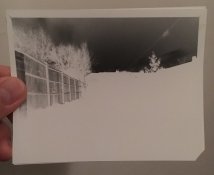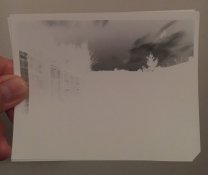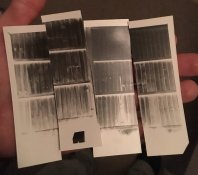For my high school photo students doing pinhole, we develop for 1.5 minutes in 1:20 MG developer. We always develop to completion, even if it appears to be a failure. We then adjust exposure accordingly. We usually end up with easily printable and scannable negs. For my advanced kids, we work with yellow (Roscoe) filters taped over the pinhole for even smoother negs. I should add that our pinhole cameras are either shoe boxes or bulk roll film boxes, with hand made pinholes. Sixty kids with sixty different exposures and results! Not very sophisticated, very chaotic, but damn fun!











